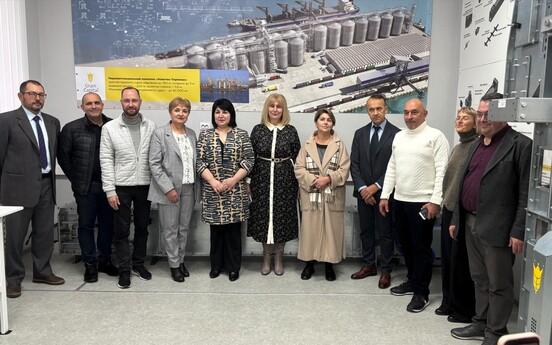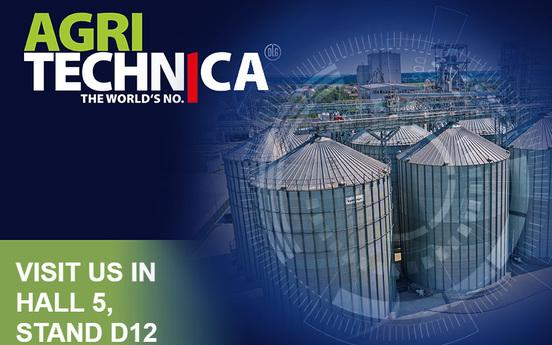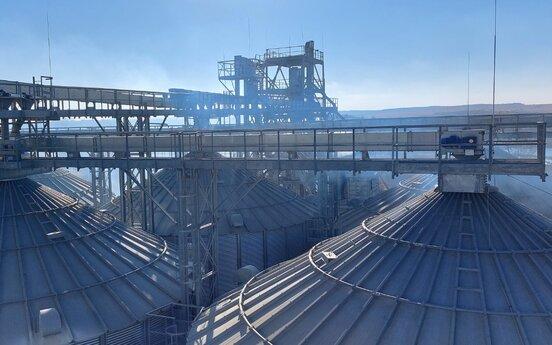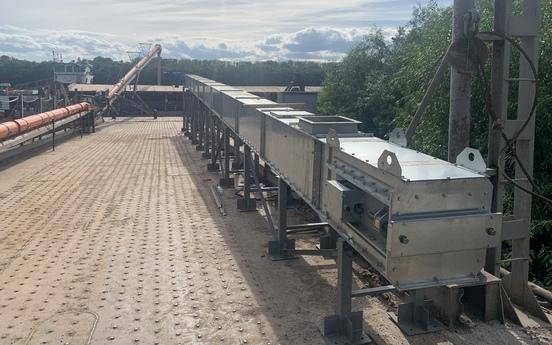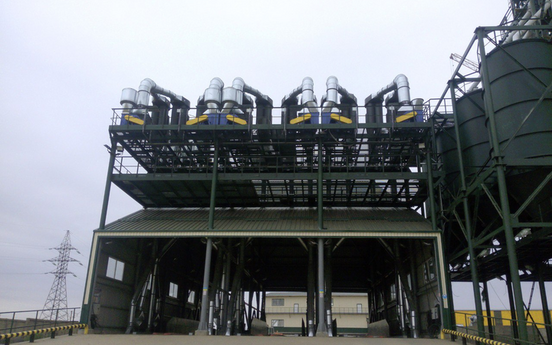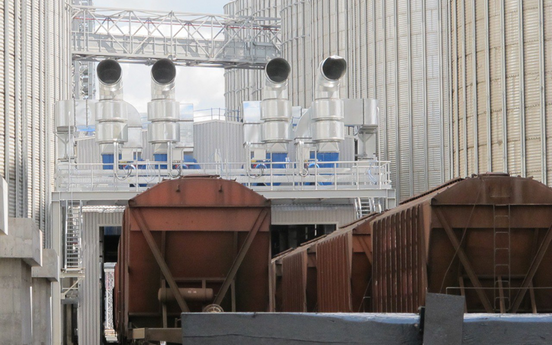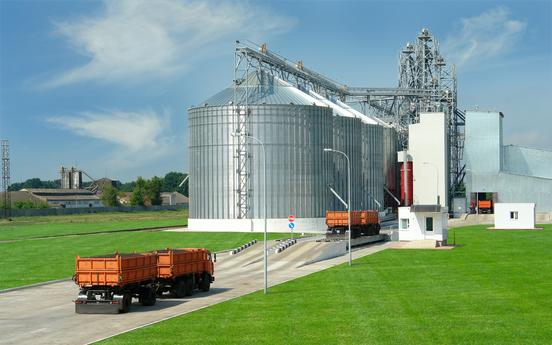What is an elevator and how does it work?

An elevator is a complex for storing and processing grain, including various mechanisms for transporting, cleaning, and drying agricultural products. It provides storage of raw materials until further processing or transportation.
Depending on the logistical tasks, the raw materials being processed, and the type of technological operations performed on them, they are divided into the following types:
- Marine grain terminal;
- River terminal;
- Universal (linear elevator);
- Compact and Start-up (mini-elevator);
- Supplementary (option for modernization and re-equipment of an existing grain elevator);
- Storage warehouse (alternative type of grain storage facility).
Grain elevator
Ukraine is a world leader in grain cultivation and export. For 10 years, we have been among the top five exporters, and even in 2023, despite the challenges, Ukraine ranked fourth in the world in wheat and corn exports. Therefore, it is only logical that grain elevators are the most common sight when traveling through the country's villages. A grain elevator is a specialized complex for the reception, cleaning, drying, and temporary storage of grain, followed by shipment by truck and/or rail and transportation to ports or processing plants. Usually, this type of elevator has a high storage capacity of 10-70 thousand tons. The productivity of transport equipment here is mainly 100-300 tons/hour.
Principle of operation
The principle of operation of an elevator is based on the step-by-step processing and bringing grain to basic conditions through drying, cleaning, sorting, and storage in various types of grain storage facilities. Let's take a look at what grain quality characteristics are and why they are needed:
- Preserving grain quality. If a farmer brings wheat from the field and it is wet, for example, then such grain must first be dried before long-term storage, and if it contains a lot of impurities, it must also be cleaned. If this is not done during storage, the grain is likely to become moldy or the excess impurities will cause it to self-heat.
- Making a profit is the main goal of any business, so once the grain has been brought to the basic conditions, its market price automatically increases, and compliance with export standards expands the logistical possibilities for sale.
- Improving processing efficiency is important if the grain is intended for further processing in the flour or feed industry.
Main elements of grain elevator design
The receiving elevator most often performs the following technological operations:
Grain reception
The first place where grain arrives is the scales, then the truck (rail car) unloading station, where the grain also undergoes initial inspection by a laboratory technician and is unloaded into a receiving pit. Next, using conveyors (most often chain conveyors), the grain crops are moved through the elevator to the next operation required by the process.
However, it is also important to note that CUA and CUA are always equipped with aspiration equipment due to the high level of dust contamination in the room during unloading.
Cleaning
During the cleaning stage, the raw materials are freed from impurities (dust, stones, weed seeds, other harmful particles) using special screens, air installations, and magnetic systems. Cleaning equipment at the elevator removes impurities and contamination from the product, maintaining its high quality and compliance with requirements for further processing.
Drying
Raw materials are dried to reduce moisture to optimal levels to prevent the development of mold, fungi, and pests, allowing the grain to be stored safely for long periods of time. Drying also increases the market value of the grain. Let's look at the example of the DryTech grain dryer to see what the dryer consists of and how air is distributed throughout it.

Transportation
Raw materials are transported between different processing stages using transport and processing equipment: chain conveyors, bucket elevators, belt conveyors, screw conveyors, etc. Modern requirements for transport equipment provide for a balance between the quality of technological processes, preservation of grain integrity, energy efficiency, reliability, operating and maintenance costs. Read more about experience in creating efficient transport bucket elevator systems.
Storage
After cleaning and drying, the grain is transferred to storage facilities, where optimal storage conditions (humidity and temperature control) are provided.
There are four main types of grain storage facilities: metal silos, floor storage warehouses, modular barn-type grain storage facilities, and concrete silos (built during the Soviet era).
Metal grain storage facilities are currently the most popular type of storage in Ukraine. They are designed for long-term or medium-term storage. The containers are made of galvanized steel. For example, Symaga manufactures its grain storage facilities from S450 structural steel and applies Z600 hot-dip galvanization to prevent metal corrosion. All silos are equipped with a ventilation system, temperature sensors, automation, etc. Silos are available with a flat bottom with a maximum capacity of 25,000 m3 and with a conical bottom on supports with a capacity of up to 2,700 m3.
Elevator automation—thermometry—is used to control grain temperature in silos and collect data. It is with the help of smart thermometry and modern automation systems that accidents can be prevented, risks reduced, and unforeseen product losses avoided.
Floor storage grain warehouses and hangars are more common for farm elevators. Grain is stored in bulk and is not intended for long-term storage.
Concrete elevators were popular in Soviet times, but are now only used in old state-owned elevators due to their high construction costs and high operating costs.
Comparison of grain storage facility types

To summarize this article on elevator operation, it is important to note that the main purpose of an elevator is to generate profit, but even with high-quality equipment and a good design, uninterrupted operation and maximum productivity of your business are impossible. Modern automation of elevator control, high-quality installation and technical supervision during the construction phase, followed by professional and regular maintenance of the elevator are necessary, but this is a topic for another article.
